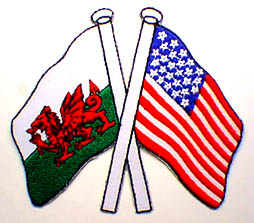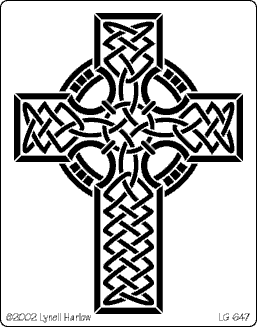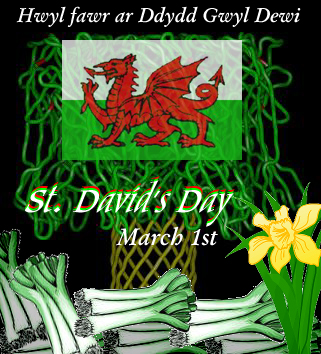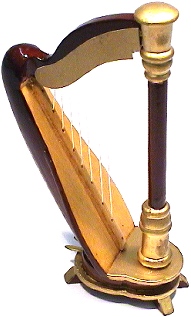

About Us
Home - About Us - Contact Us - Events - News - Scholarships - Links
PURPOSE & ACTIVITIESThe purpose of The Saint David's Society of Utica is to promote activities which are unique to the Welsh culture, and to support efforts to preserve contributions made by Welsh-Americans in the development of this area. Membership is open to persons of Welsh heritage and also those interested in Welsh culture. Read a brief History of our Society. Our Society is described by a Constitution. The most recent Ammendments to the Constitution were approved by the membership at the Annual Banquet and Business Meeting on 1-March-2020. Our Executive Committee oversees the activities of our Society. Newsletters document many of our activities and interests. |
|
The St. David's Society of Utica, New York offers scholarships to students pursuing post secondary education through college or university degree programs or through specialized secondary education such as technical schools. Applicants must be a member of the Society or relative of the immediate family (Parent, Grandparent, Brother, Sister) of a member of the Society for the past two years. Scholarships awarded are for the coming school year. The scholarship application form has been revised, and is available as a downloadable (MS Word format) document. Please refer to our Scholarship page for details. |
SCHOLARSHIP FUND GRANTS
|
RECOGNIZE A NAME? |
||
|
WYNNE OWENS POWELL PRITCHARD PUGH GRIFFITHS MORRIS HOPKINS |
EVANS ROBERTS HUMPHREY PARRY DAVIES HUGHES REES |
EDWARDS MORGAN THOMAS ELLIS WILLIAMS LLOYD JONES |
| Perhaps one of these Welsh names belongs to you or a member of your family. If not, you must know at least one person with such a name. Chances are, with a name like those above, there is some Welsh in the family. | ||
THE DAFFODILThere are many beautiful
flowers in Wales but the yellow daffodil, associated with St. David,
is the Welsh national flower. Our logo provides a look remindful
of a stained glass window for the Church historically and in preservation
efforts. The Celtic medallion, at the bottom, ties the old country
to the new and the background of hills and valleys in central New
York are reminiscent of those in Wales. |
 |
|
 |
THE WELSH LANGUAGEThe Welsh language is
a member of the Celtic branch of the Indo-European language family.
It was the ordinary spoken language of the people of Britain before
the Roman occupation and during the 400 years of that occupation.
Even as it is spoken today, Welsh could probably be fairly well
understood by the Britons who fought against Julius Caesar in the
year 55 B.C. |
|
ST. DAVIDSt. David, the Patron
Saint of the Welsh, was born in Pembrokeshire, Wales, in the year
520. He was the son of the Prince of Ceredigion and the grandson
of Prince Ceredig, of the Royal House of Gwynedd. |
 |
|
 |
AMERICANS OF WELSH DESCENTAmericans of Welsh descent have played important roles in the founding of our great nation, in its subsequent development and in its continuing welfare. Among those who have contributed much to America are the following:
|
|
PROGRAMSSociety sponsored programs include the Annual Dinner Meeting/Election of Officers in April, St. David's Day Banquet and Presentation of the Welsh Person of the Year Award in March; the Spring Gymanfa Ganu in May; the Welsh booth at the Remsen Festival of the Arts in September, the fall Gymanfa Ganu in October. The Society also sponsors musical groups from Wales, including outstanding choirs, that are on tour in the U.S. and provides scholarships to worthy young men and women for college study. The Society also encourages
participation in other Welsh related activities and programs in
our area. These include special July and August services at the
Historic Bethel Church; May, July and September services at the
Enlli Church; and July services at French Road Church ...all in
nearby Remsen, N.Y. Members also participate in Remsen-Steuben historical
society programs at Historic Capel Cerrig (Old Stone Church) in
Remsen. The annual Gymanfa Ganu at Welsh Church in Nelson, and the
annual Remsen Gymanfa Ganu are well attended by Society members. |
 |
 |
THE STORY OF THE LEEKRevered by the ancient Egyptians as a symbol of the universe and prized by the Romans as an emblem of virtue, the Leek reached its true apotheosis in Wales. Celebrated as one of its national emblems, the Leek is worn by the Welsh Guards and the Prince of Wales. In the Battle of Heathfield in the 7th century, Welsh troops wore Leeks in their helmets to distinguish them from their enemies. |
Y DDRAIG GOCH . THE RED DRAGONThe Druids, ancient priests,
spoke of a heaven-sent dragon which would lead the nation in its
struggle to perpetuate Welsh language and culture. This dragon was
also associated with Calwaladr, called the last King of the Britons,
who fought the Saxon forces in the 7th century. Eight centuries
later, Henry Tudor marched under a "fiery dragon" on his
way to the Battle of Bosworth where he defeated Richard III and
was crowned King Henry Vii. Y Ddraig Goch is recognized as the Badge
of Wales and appears on the Arms of the Prince of Wales. In 1953,
it became the authorized National flag of Wales. |
 |
HISTORYDuring the early days of the Colonies, there was, relatively speaking, a flood of emigrants from Wales. Some 40,000 settled in Massachusetts, Maryland, Virginia, Delaware and the Carolinas between 1620 and 1640. Others came in large numbers to Vermont, Wisconsin and New York. Welsh heritage in New York dates from the late 1700's to the mid 18OO's, when Oneida County could claim the largest concentration of Welsh settlers in America. The main areas of settlement were Utica, Steuben and Remsen. After the Revolutionary War, land was granted to Major General Baron von Steuben by a grateful government. This land, 16,000 acres in the town of Steuben, was divided into 100-acre plots and sold to the newly-arrived Welsh settlers. In these early days,
Welsh families came together to keep alive their cultural traditions,
maintain friendships and honor their Patron Saint, St. David. Two
of the earliest groups were the Welsh Society of Philadelphia, founded
in 1729 and the St. David's Society of New York State in 1835. The
St. David's Society of Utica can trace its roots to the Cymreigyddion
Society's Eisteddfod in 1856. |
 |
 |
ST. DAVID'S DAYSt David's Day, as celebrated today, dates back to 1120, when Dewi (David) was canonised by Pope Callactus the Second, and March 1st was included in the Church calendar. Each year, throughout
the world, wherever Welsh families can foregather, St. David's death
is commemorated on March 1st. |
| The
author of the words of this Song and Chorus, Evan James -- known also
by his bardic name "Ieuan ab Iago" (Evan the son of James)
-- was a weaver by trade, who was born in Caerphilly in South Wales
in 1809, and died in the neighboring town of Pontypridd in 1878. The
music was written by his son, James James, who was then landlord of
an inn called the Welsh Harp in Pontypridd, and who could play the
harp himself. The piece was first published in the first number of
Owen's "Gems of Welsh Melody", 1860, the English words (in
addition to another set), "with symphonies, accompaniments, and
chorus," being by the editor. It is now, and has been for some
time, recognised generally as the Welsh National Anthem.
|
The Welsh National AnthemHen Wlad Fy Nhadau (Land of My Fathers)
|
|
Click HERE for other variations...
|
||||||||||
|
||||||||||
To contact the webmaster, click HERE
This page was last updated on



